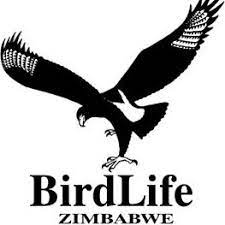IMPORTANT BIRD AREAS
Z016 Wabai Hill (formally Debshan Ranch)
UNPROTECTED
Global IBA (A1)
20°04’S; 29°34’E
c. 100 000 ha
SITE DESCRIPTION
Shangani Ranch (formerly Debshan Ranch) is situated south of Shangani, in the Matabeleland South province. It is primarily a cattle ranch, with up to 8 000 head, and consists of vast areas of grassland suitable for grazing. The large granite inselberg called Wabai Hill, which grades into a long ‘whaleback’ to the west, now lies outside the ranch. In siNdebele, Wabai means crow, i.e. Pied Crow Corvus albus, but White-necked Ravens Corvus albicollis actually live on the hill. The trigonometric beacon on top of Wabai is at 1 461 m a.s.l., nearly 300 m above the surrounding plain which is at 1 200 m a.s.l. The Wabai is a beautiful and rather symmetrical dome, visible from far and wide, and has near-vertical slopes on three sides. The area is on the granite shield, at the southwest extremity of the great miombo woodland belt. The soils are sandy and there are many granite outcrops. The average rainfall is about 650 mm p.a. The woodland is dominated by Brachystegia spiciformis and Julbernardia globiflora, with Parinari curatellifolia and Terminalia sericea occurring in patches. This broadleaved woodland is patchy and therefore called ‘bush-clump’ savannah.
BIRDS
Wabai Hill was a daily roost-site for Cape Vulture Gyps coprotheres. Up to 225 birds (March 1983) had been counted on the southeast faces, but more regularly 100-150 birds were present, mostly immatures. Wabai was the only known Cape Vulture roost site in Zimbabwe, but has been abandoned. White-backed Vultures Gyps africanus, White-headed Vultures Aegypius occipitalis and Lappet-faced Vulture Aegypius tracheliotos occur on the ranch. Sometimes, in the rainy season, Wattled Crane Bugeranus carunculatus (rarely), Lesser Kestrel Falco naumanni and Pallid Harrier Circus macrourus use the grasslands. At least 50 raptor species have been sighted on the ranch, which is also a haven for Kori Bustard Ardeotis kori.
CONSERVATION ISSUES
The ranch is owned by De Beers of South Africa. The management has been fully supportive of wildlife conservation measures and Shangani Holistic is pioneering a holistic management style to sustainably manage cattle, wildlife and people together. The ranch promotes wildlife utilisation by means of sport hunting of antelopes and Leopard Panthera pardus. It has the largest herd of Tsessebe Damaliscus lunatus in the country and in the winter months the ranch becomes home to up to 300 migrant African Elephants Loxodonta africana.
Wabai Hill has now been severely degraded by communities that have settled there. Raptors and other species are finding refuge inside the ranch., where there is an active vulture restaurant, resulting in a general shifting of the nesting clusters towards the interior of the ranch and the vulture restaurant. 47 nests of White-backed vultures (42 active) have established on the ranch and are currently being studied. The ranch is patrolled by scouts, in addition to the cattle hands. In 2022, a court interdict to block mineral exploration on the ranch was granted, but its future is uncertain.
Globally threatened
White-backed Vulture – Breeding (pairs) – 42 Br | Total Numbers –
White-headed Vulture – Breeding (pairs) – | Total Numbers –
Lappet-faced Vulture – Breeding (pairs) – | Total Numbers –
* Lesser Kestrel – Breeding (pairs) – | Total Numbers – 5-15
* Wattled Crane – Breeding (pairs) – | Total Numbers – OV
Globally near-threatened
* Pallid Harrier – Breeding (pairs) – | Total Numbers – OV
* – Species does not meet IBA threshold
Br – Confirmed breeding
Br? – Suspected breedingV – Vagrant
OV – Occasional visitor
